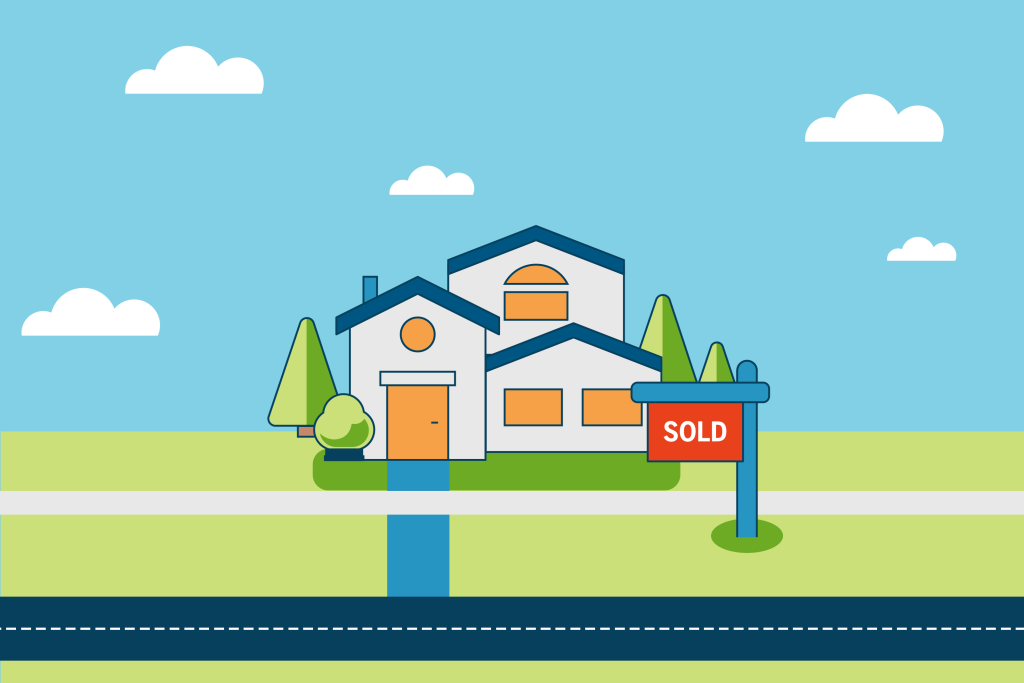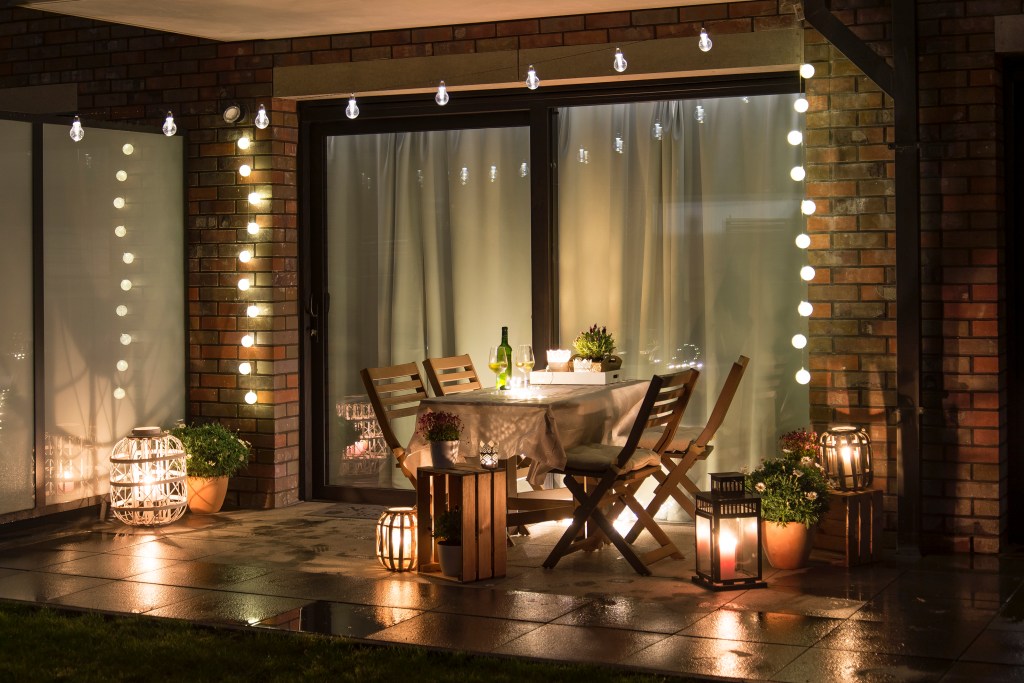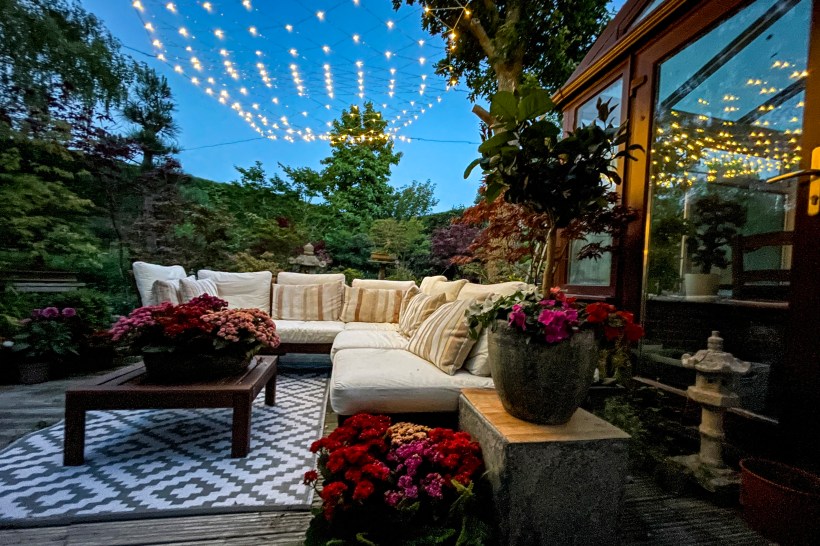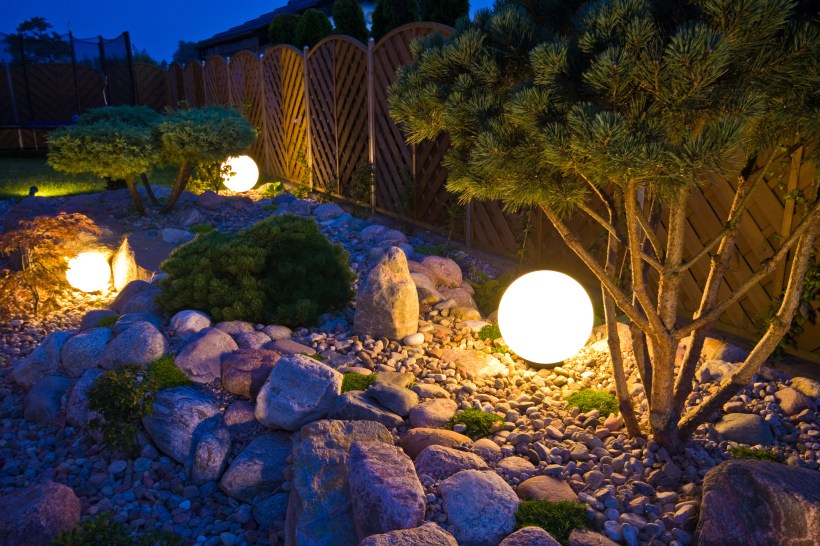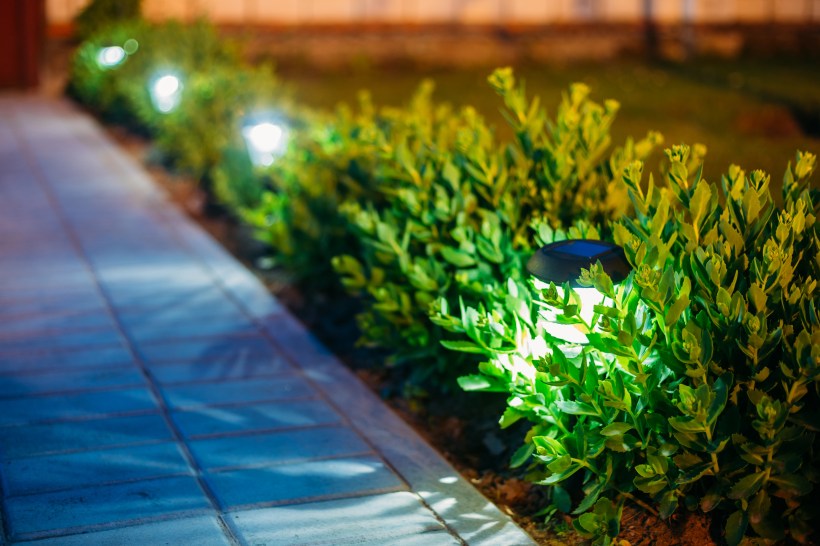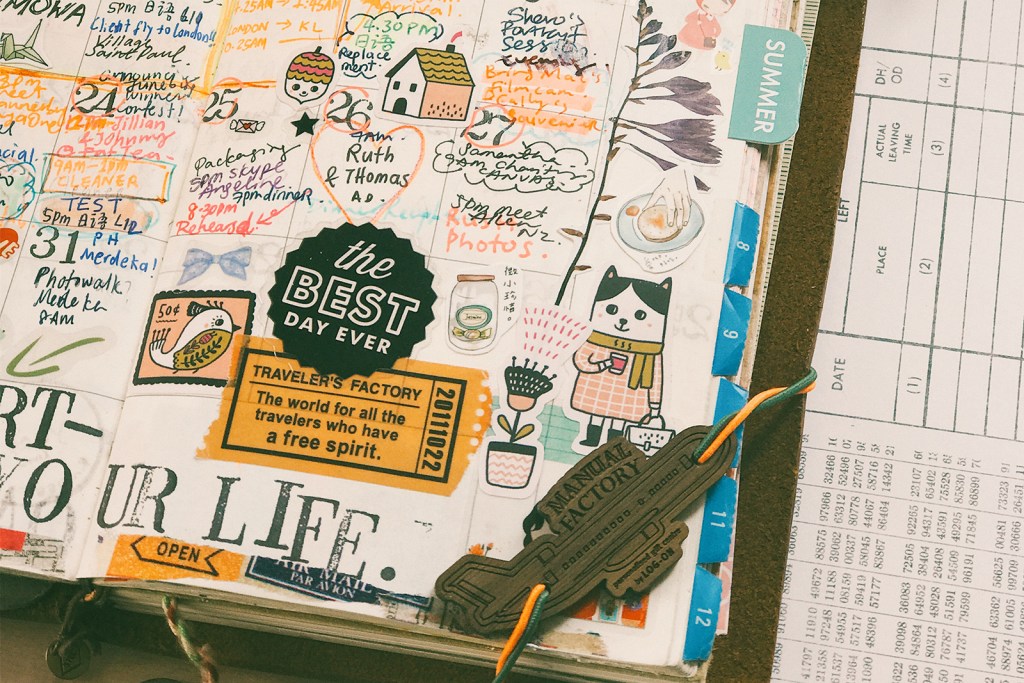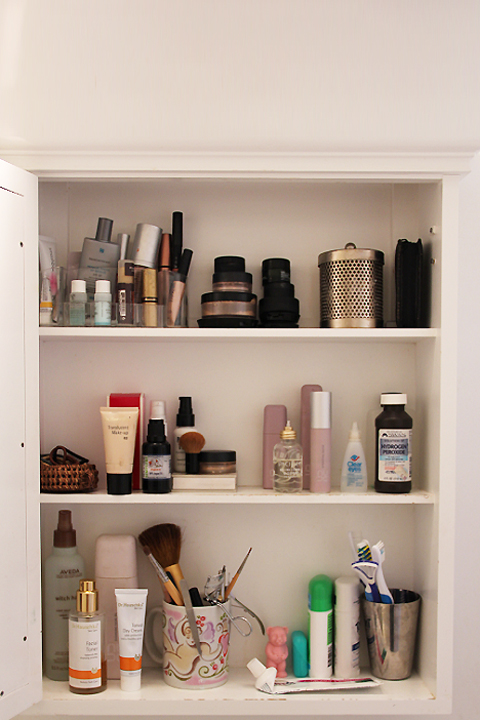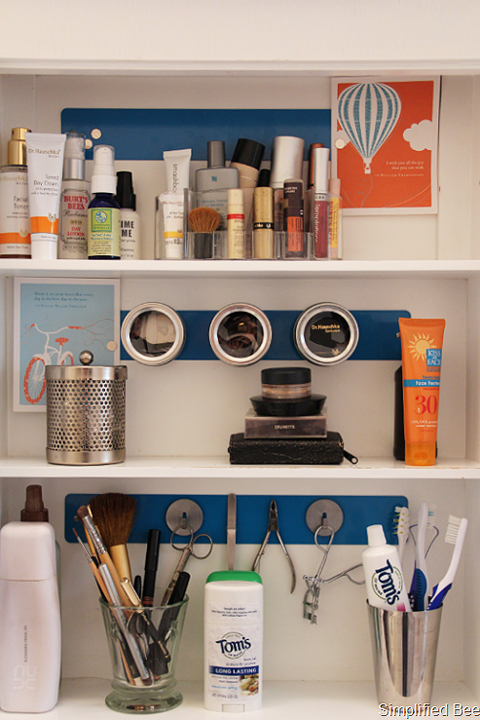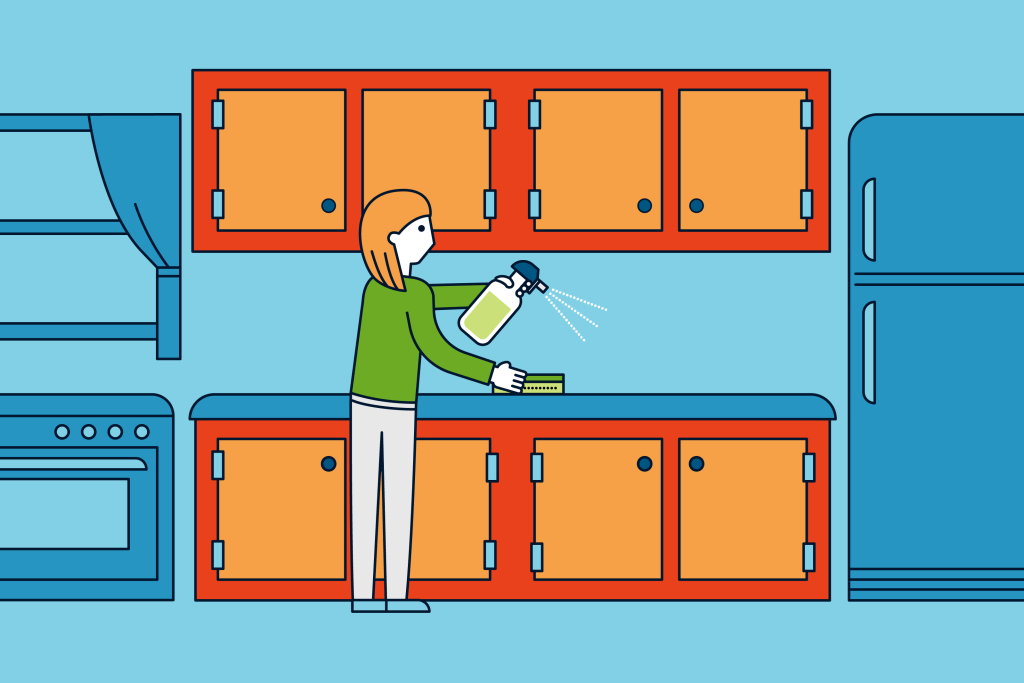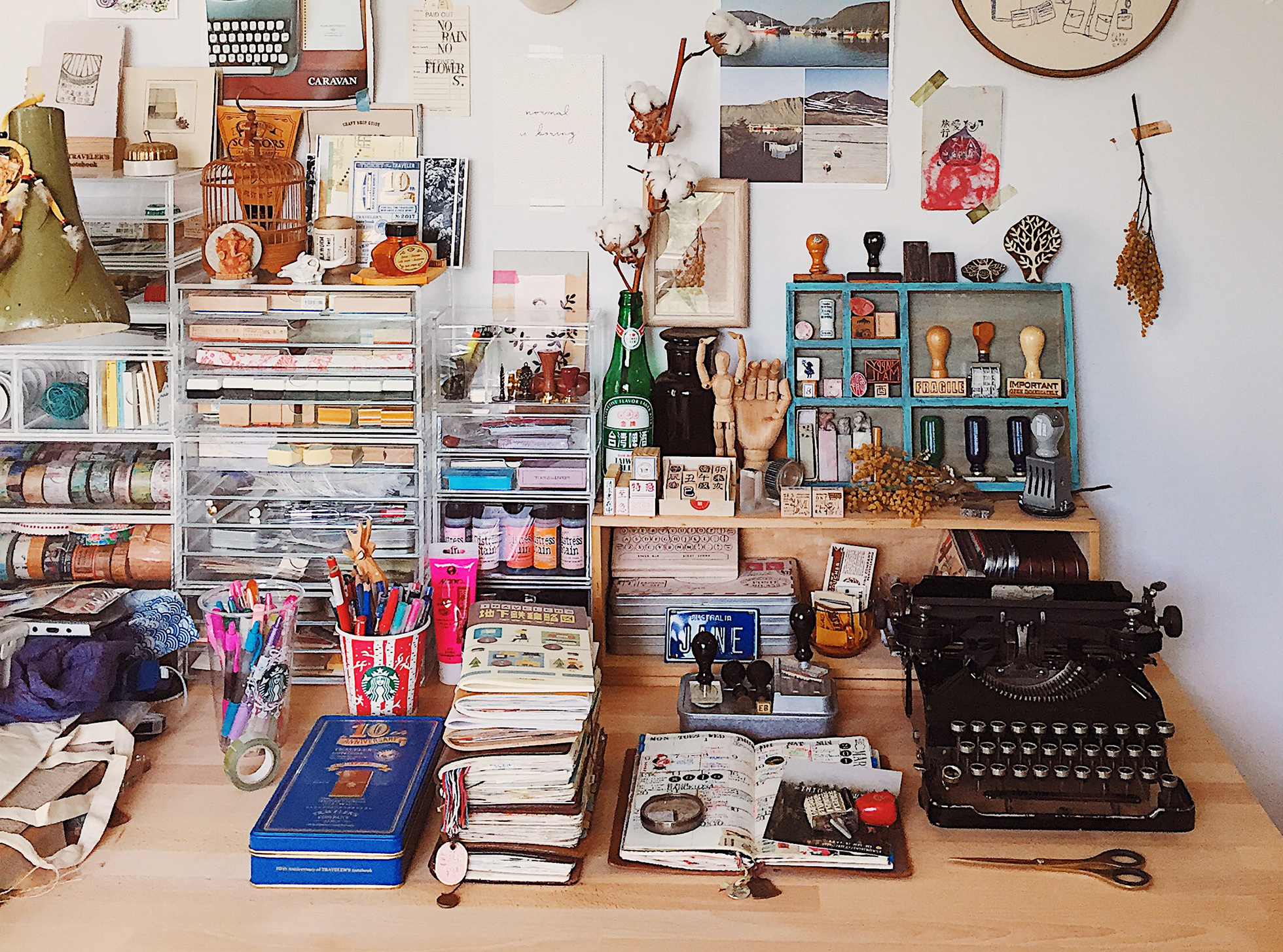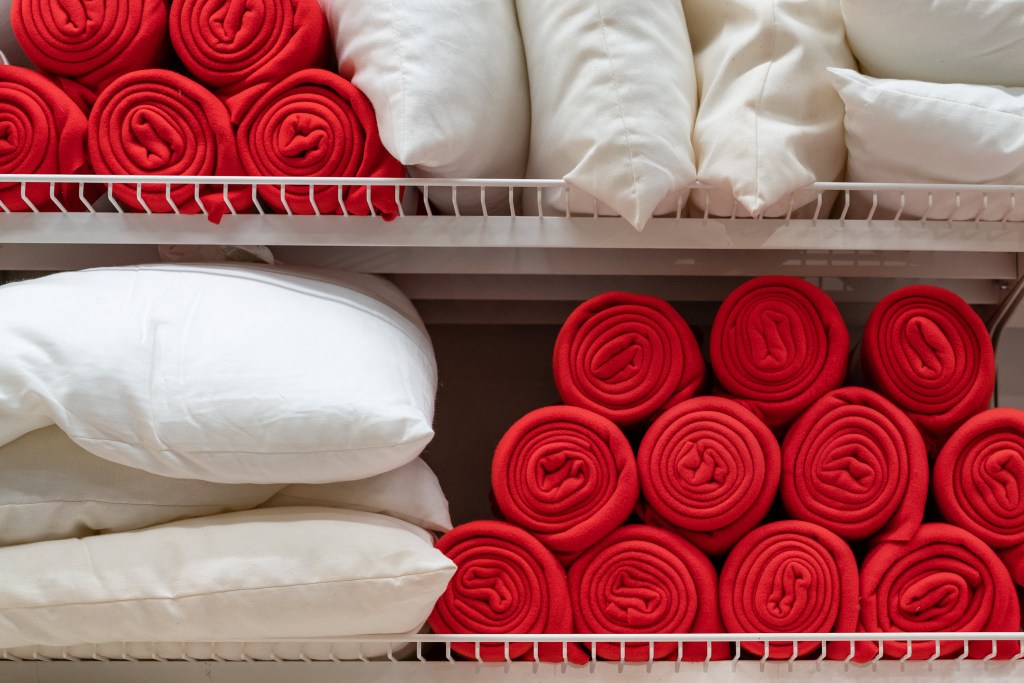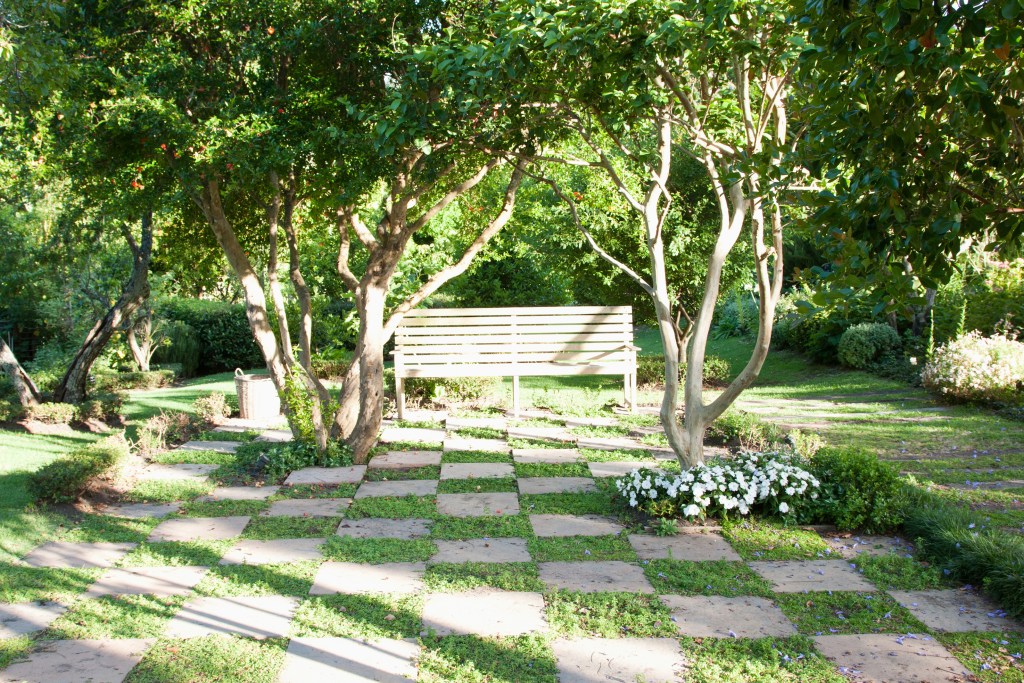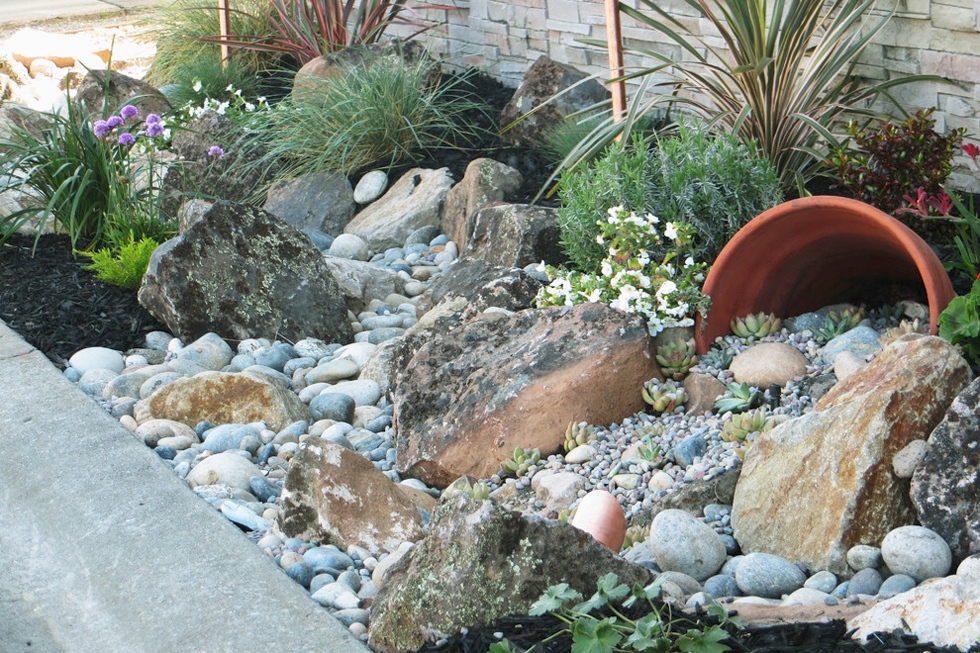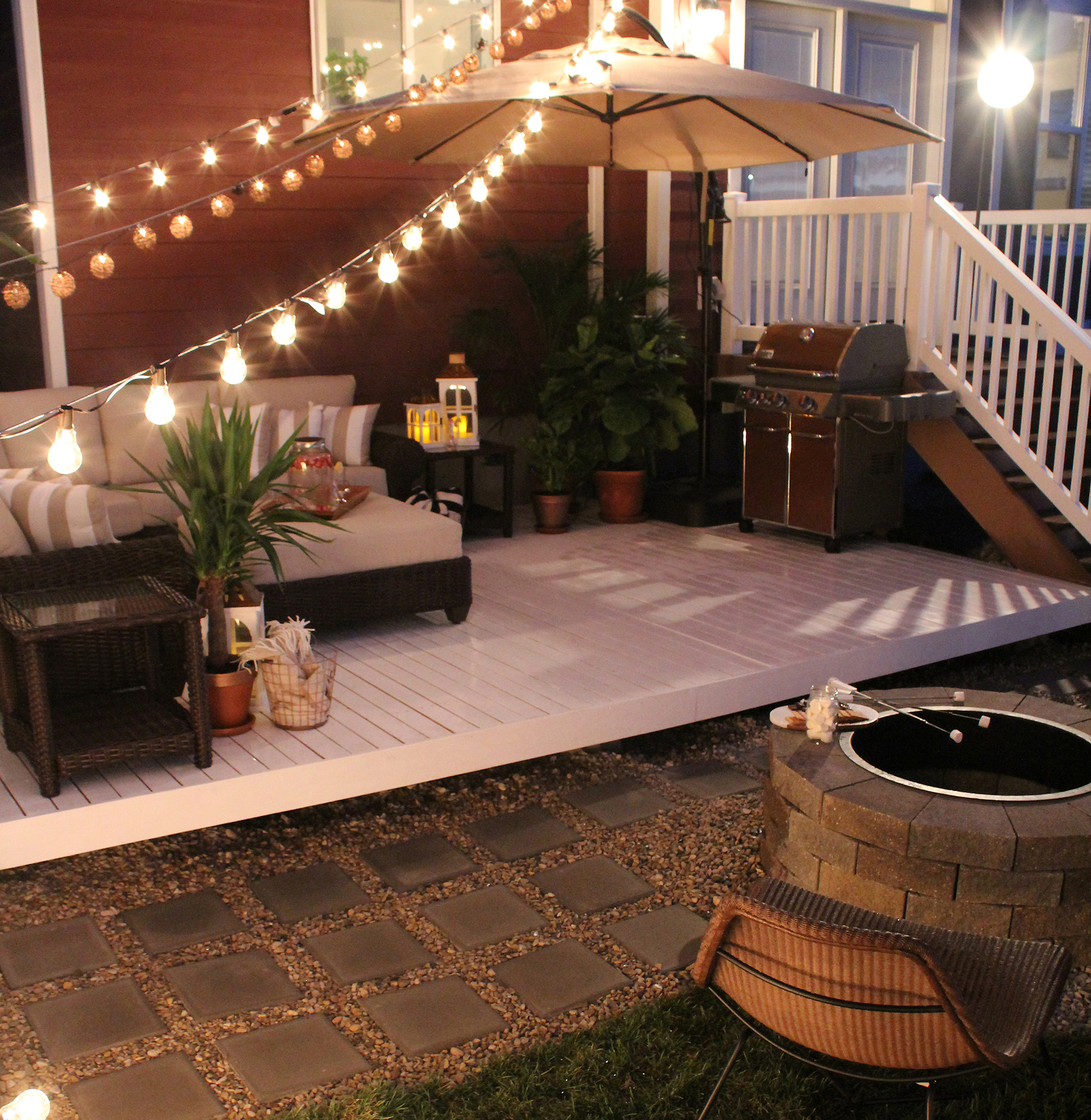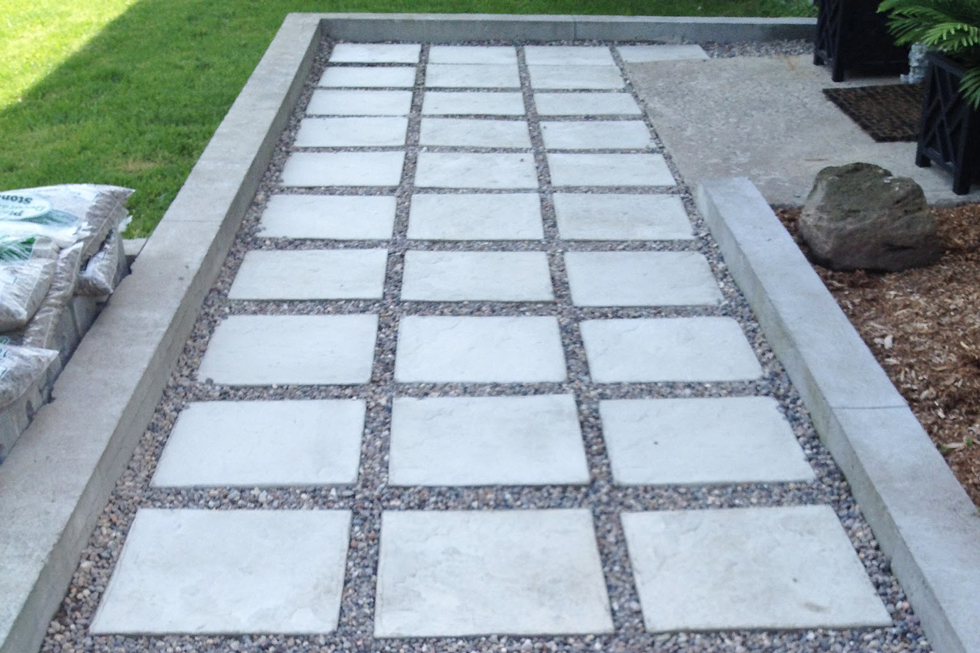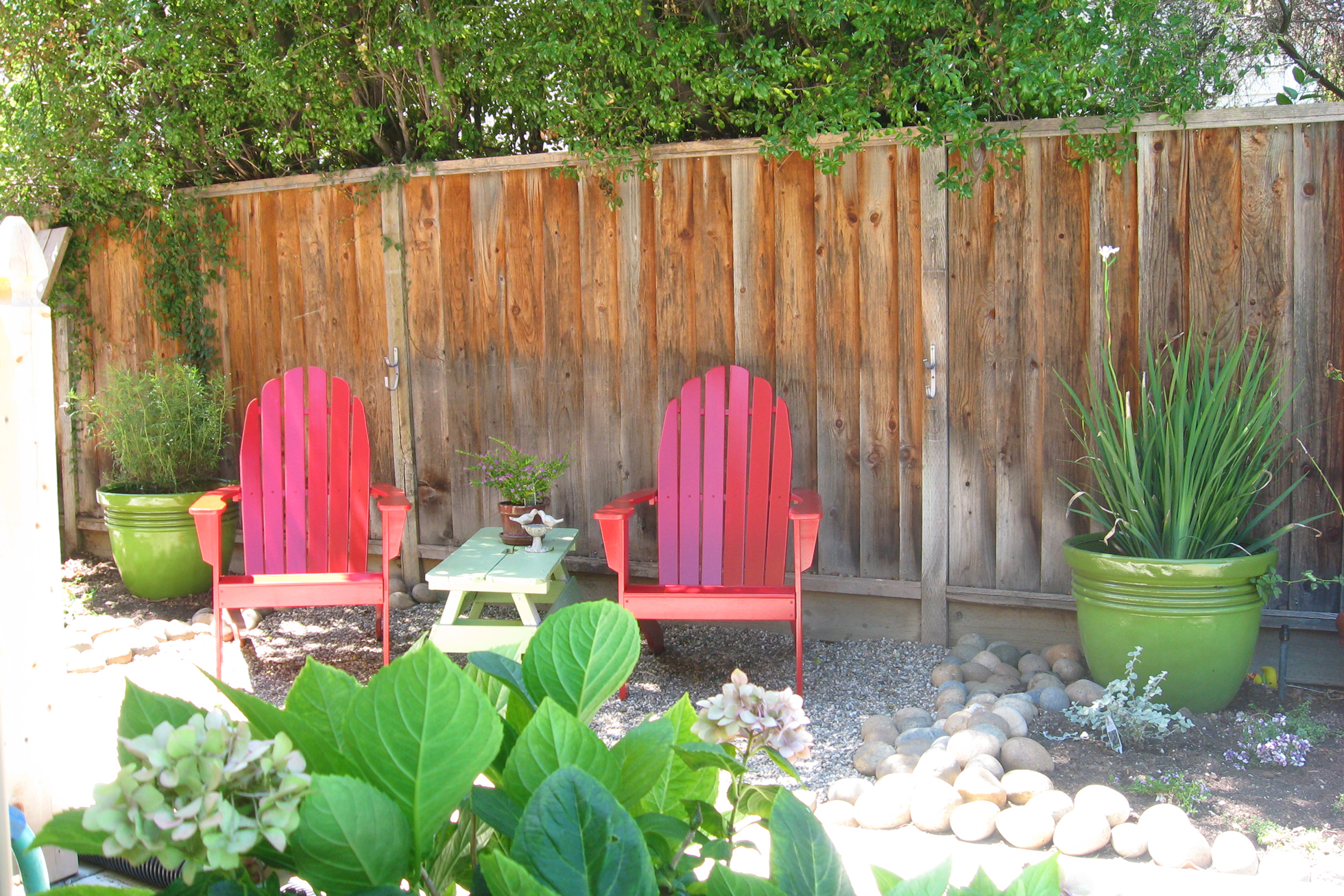Creating personalized bins is a good start.

- It’s so easy (and so unfair) how quickly your entryway can go from clean to chaos — and that chaos makes trying to get out the door brutal.
Think of all that time wasted hunting for your keys and umbrella, or digging through a pile of coats to find the one you need. Five minutes spent searching for stuff each morning becomes 35 minutes a week, or more than 30 hours a year!
Corralling your clutter can feel overwhelming, but with the right mindset and a few clever hacks, your entryway can be what helps you get out of the house on time — not what slows you down.
Here are seven ideas to help you out.
#1 Personalize Buckets
How do those hats and gloves end up all over the entryway? Half the time, it happens when someone tosses them aside while searching for their own stuff. That’s why separating each person’s storage space is so ingenious.
“Susie has her own basket, Tommy has his own basket,” says professional organizer Yve Irish based in Pittsford, N.Y. Assigning space and responsibility to each individual family member saves you — and your kids — time digging through other people’s belongings.
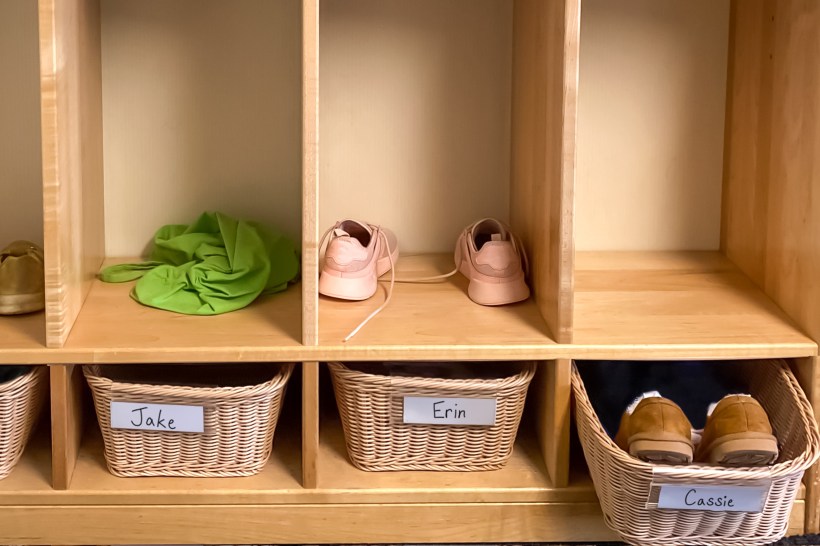
- You don’t need a huge closet to do this. Even little baskets in an inexpensive Ikea shelving unit can do the trick.
- Irish recommends pairing a storage system with training to make personalized buckets work. “Teach your children to return items to their basket when they come home,” she says. “You want to make sure that happens and they get into the habit.”
#2 Hang Your Purses and Bags
Digging through a forest of coats to find the right purse for your outfit is a hassle. It’s also not great to shove your bags onto a cluttered closet shelf or (ugh) pile them on the floor — a practice some believe is bad luck. There’s a feng shui saying, “A purse on the floor is money out the door.” So hang your bags from the closet rod using S-hooks instead.

- Lacking a closet? If your walls are less than five feet apart, you can install a tension rod between them. Or choose a decorative wall shelf with hooks.
- No matter how you hang them, do a purse purge first to avoid creating a handbag jungle. Keep that oversized bag you only pull out for special occasions tucked out of the way.
#3 Create a Charging Station
While you might charge your primary smartphone overnight by your bedside, creating a charging station in your entryway can save valuable time, especially if you have a work phone or use the kids’ tablets for car rides. When they’re always charging in the same spot, you won’t waste time in the morning hunting down chargers.
Assemble tech storage using assigned baskets with neatly organized cords or go big with a built-in. At organization blog “A Bowl Full of Lemons,” a cabinet with plugs inside was installed in the mudroom to serve as a neat home for laptops, tablets, and smartphones, which all charge up inside.
#4 Install an Information Station
Papers can be pernicious devils, accumulating in ugly piles, blocking surfaces, and creating stress. Cut off the problem at its head with an information station, starting with a customized paper organizer on the wall.
“We had an extreme amount of clutter,” says Aniko Levai, the blogger behind “Place of My Taste.” As part of a grand entryway remodel, she created a wall organizer to keep papers and small items out of the way.
The process is simple enough for even the newest DIYer. Levai created the organizer by combining painted wood, fabric, a few small hooks, and a $15 wall magazine rack from Ikea.
But not all paper needs to be saved, and mail-sorting procrastination is the stuff cluttered entryways are made of. Setting up your recycling center near your entryway — in the closet or a free corner — can turn paper sorting into a quick, easy ask every time you walk in the door.
If you have the space, add a shredder into the mix or a whiteboard for reminders.
#5 Add Lots of Shoe Storage
Step into any big box home store and you’ll find two dozen shoe storage options, from stackable organizers to hanging canvas cubbies. The perfect option for you is a matter of taste and space, but let’s be serious: However many shoe cubbies you think your family should need, the truth is probably three times that amount. That’s why we’re partial to this clever solution from Sara Davis, who transformed an old wooden mail sorter — found at a local antique shop — into a gorgeous, 45-slot shoe cubby.

- While antique mail sorters may not be available everywhere, you can create your own by converting a bookshelf or cabinet, bundling cut PVC piping into handmade cubbies, or buying a large shoe cubby. Davis’ solution is perfect for her long, thin mudroom, which is 17 feet long, but only five feet wide.
- “It’s hard to miss, so it’s a great reminder for the kids to take off their shoes,” Davis says.
#6 Assign Lockers
Industrial-style decor is in. Take advantage of the trend in your entryway by installing lockers. (Yes, we mean the aluminum models your kids use at school.)
While not ideal for a super-small entryway, lockers can instantly triple your storage space if you have the room, as each one has hooks on three surfaces, as well as shelving. Even better, install short tension rods and use S-hooks for even more hanging storage.
And they provide plenty of room for creative decoration. You can paint them to match a variety of decors.
#7 Make a Station for Wet, Muddy Footwear
Your entryway is always one of the first victims of nasty weather. Is it a rainy autumn? Say hello to a puddle of dirty leaves. Winter? Snow boots can leave the entire room soaking and soiled.
Weather-safe storage solutions can make a big difference in an unorganized mess verus a pristine entryway. The biggest culprit is shoes. While a mat can go a long way in preserving the cleanliness of your entrance, you’ll need to develop a plan for storing boots — without them dripping everywhere.
Try this DIY solution. Line the bottom of a chest with a mud tray and fill the tray with a layer of river rocks. The rocks allow the water to drain away from the soggy boots so they’ll be ready to use the next morning — and the whole process is hidden away inside the chest.
“Visit HouseLogic.com for more articles like this. Reprinted from HouseLogic.com with permission of the NATIONAL ASSOCIATION OF REALTORS®.”

